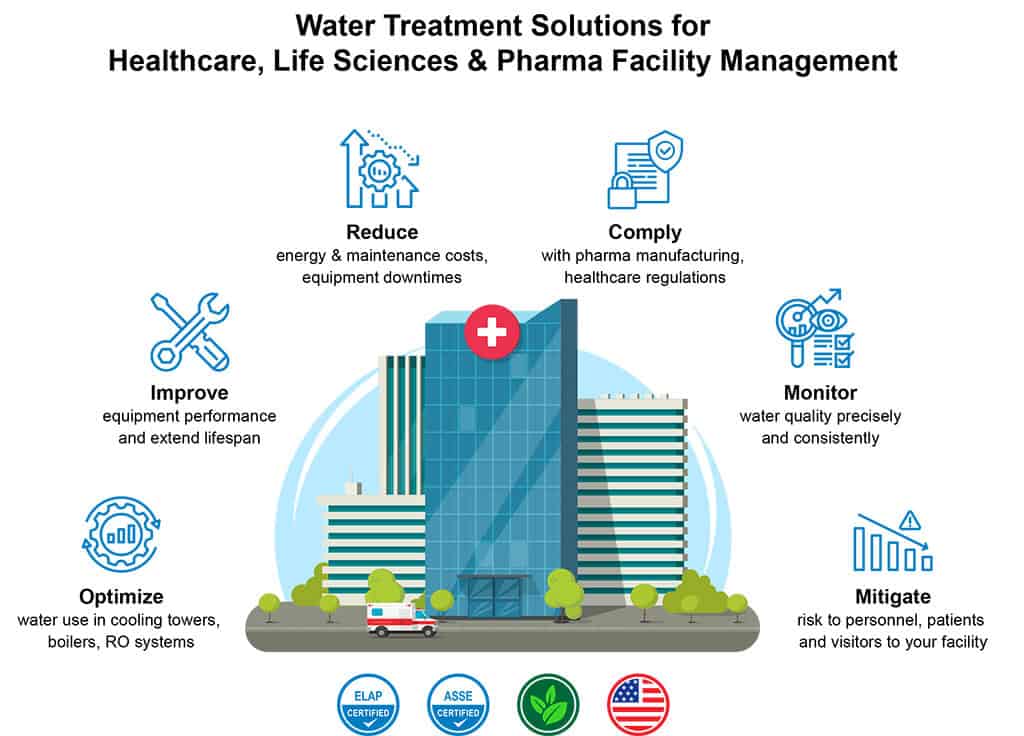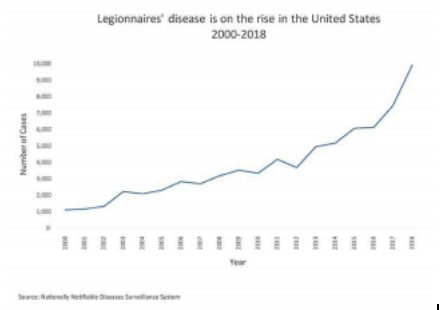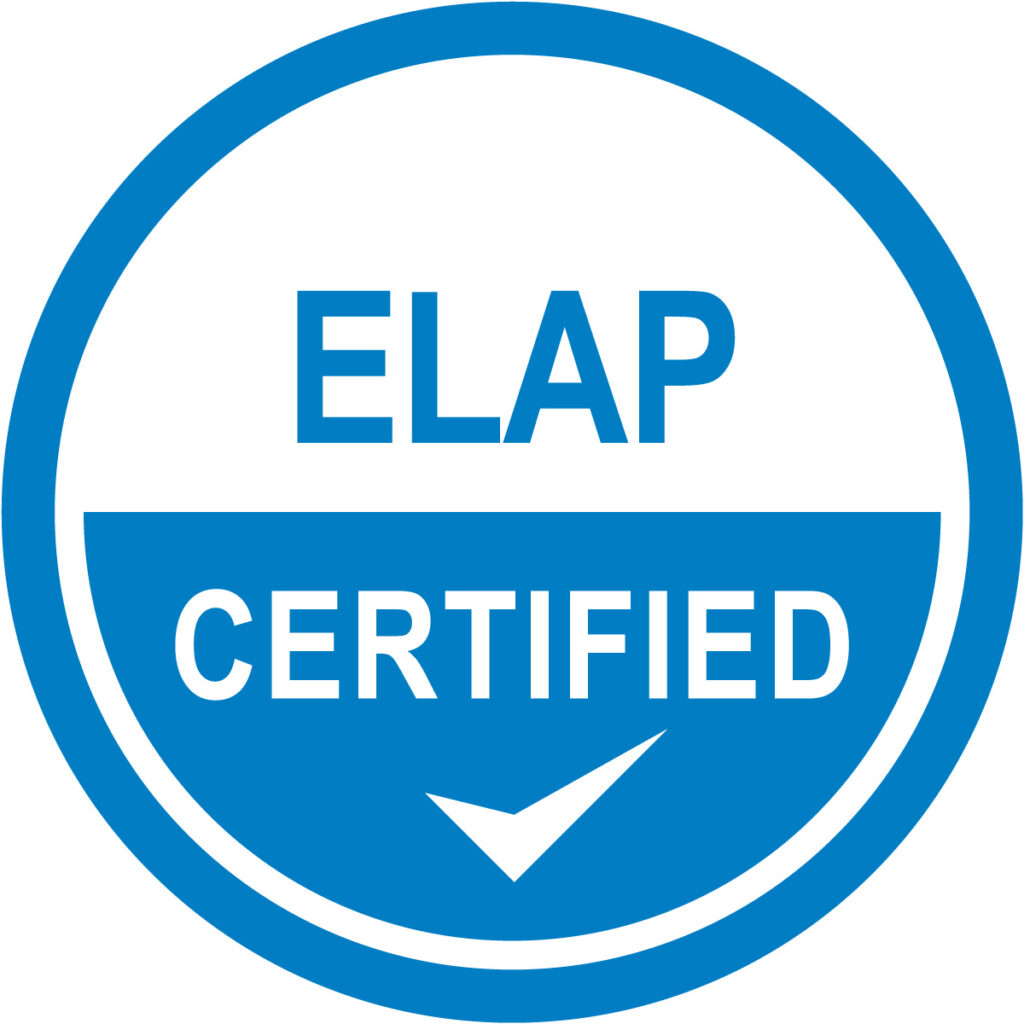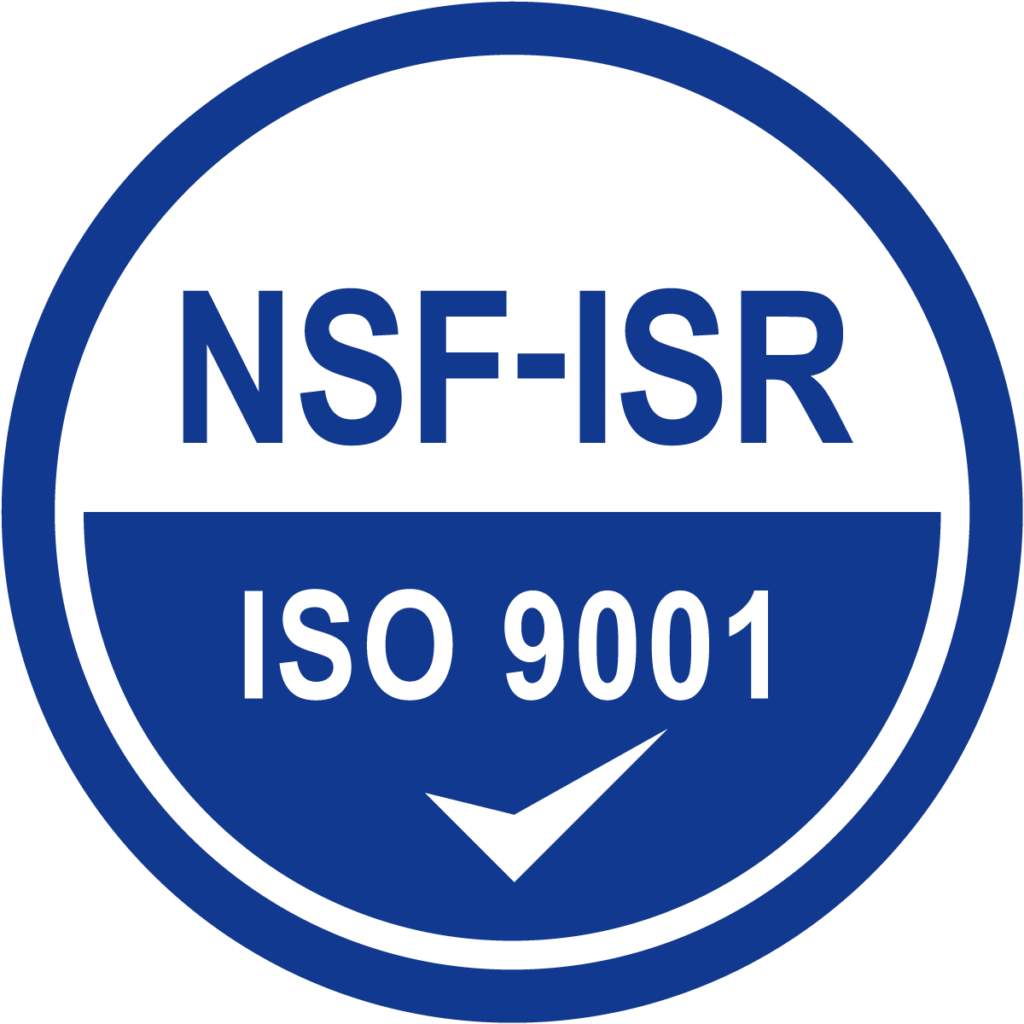A Case for Water Management

Legionnaires disease is a respiratory infection “resulting from aspiration of clumps of Legionella biofilms detached from air and water [HVAC] systems.” Its name stems from a three-day convention of the American Legion held at the Bellevue Stratford Hotel in Philadelphia in July 1976. More than 2,000 attended the annual event. Within a few days after it ended, attendees and others who were at the hotel began showing up in hospital emergency rooms with mysterious respiratory symptoms – just over 200 in all. Despite doctors’ efforts, more than 34 people lost their lives to the illness.
The CDC and other scientists investigated the source of the bacterium, which they dubbed Legionella pneumophila. They found that it was already present in the hotel’s cooling system and aerosolized through its normal operation. Inhaling the mist caused convention attendees and other hotel occupants to fall ill with the respiratory ailment we now know as Legionnaires’ Disease.
Causes and Risks
Understanding the contaminated cooling system as a source, researchers continued the work to understand how Legionella pneumophila creates a home for itself in HVAC systems. Most important, they wanted to uncover ways to prevent it from doing so. What scientists learned is that the bacterium is naturally found in lakes and streams. It becomes problematic when it grows and spreads in human-made structures such as large plumbing systems, decorative fountains, poorly maintained hot tubs, and cooling towers. Water and fans are typically used in cooling towers to maintain centralized air-cooling systems. Such systems are common in hotels, hi rise apartment complexes, commercial spaces, large office structures, health care facilities, and school buildings.
These facilities are concerning because they have the capacity to house hundreds and even thousands of people. The high occupancy coupled with bacterium-laden water in the cooling systems increase the potential for major outbreaks of the disease. The concern for this is so great for health care facilities that the CDC published ASHRAE 188 (American Society of Heating, Refrigeration and Air Conditioning Engineers). The 2015 Standard emphasized the importance of formally establishing water management protocols in these structures because of the vulnerable populations they house.
People who are sick, immune-compromised, or elderly spend one or more nights in these facilities. Their ability to fight off disease in their weakened-states is difficult; yet they can catch disease with ease. The establishment of a comprehensive water management program to control “water-related healthcare-associated infections” is needed, says the CDC. It adds that a consultant with “Legionella-specific healthcare environmental expertise” may be able to help with specific interventions.
Researchers and water management experts also call attention to the risk of Legionella growth in water systems that go unused for extended periods. An example of these are the conditions created by the arrival of COVID-19. The pandemic abruptly shifted workers from offices to homes. It did the same for students, pushing them out of schools to study from the desks and dining room tables in their homes. This left the water systems in large office structures and school buildings unused for months. The stagnancy resulting from the lack of flushing and steady movement of water increased the risk of Legionella growth in the water systems. Appropriate measures must be taken to ensure they are clean and safe of Legionella and other water-borne pathogens before reopening the buildings. Without these actions, the systems could put the students and staff at risk of contracting Legionnaires disease or other respiratory ailments – on top of the already acute risk of contracting COVID-19.

Prevalence of Legionnaires Disease
According to the CDC, Legionnaires’ disease has increased nine-fold since the year 2000 (see chart below). Most at risk of contracting it are those 50 and older, and people with weakened immune systems, underlying morbidities like diabetes, kidney and liver failure, chronic lung disease, and a history of smoking. Symptoms include fever, coughing, chills, and muscle aches.
Legionnaires’ Disease Case Trend

The report did not indicate sources of the exposures noted in the graph, but none were attached to outbreaks (which include 2 or more persons from the same location or event). Nonetheless, given the potential for large numbers of people to be exposed to Legionella in buildings with centralized air-cooling systems, a great deal of focus has been placed on controlling the bacterium in these large facilities, particularly those with vulnerable populations.
Legionella Monitoring and Prevention in Large Facilities

The CDC and other experts recommend instituting several measures for managing the water quality of air-cooling systems in large facilities. While they do not render the systems impenetrable to Legionella and other water-borne pathogens, the measures help discourage their growth and ultimately their spread. The recommendations include:
- Maintaining the hot water temperatures at the highest levels permissible by state and local regulations
- Ensuring disinfectant levels are detectable at building entry and points of water use
- Measuring the pH of water to determine effective disinfectant levels 4. Proactively sampling for Legionella in the water environment
When facilities lack the capacity to consistently monitor water and environmental quality, the use of a consultant with expertise in Legionella might be an option. Some factors to consider when hiring a consultant include:
- Level of Legionella-specific experience with a facility of your size and type
- Accreditation status of the laboratory for environmental testing and level of participation in a proficiency testing program for Legionella
- Level of experience with environmental assessments and Legionella sampling
- Consultant’s experience with Legionella remediation from a water system the size and type of your facility
- Extent of consultant’s experience creating water management programs compliant with industry standards for a facility of your size/type
- Experience in your state or jurisdiction, and potential conflicts of interest
Whether you choose to self-manage your facility or hire a consultant, the significance of implementing a water quality management program cannot be overstated.
Summary
Legionnaires’ disease was discovered in 1976. It was a scary time because of its devastating effects, ineffective treatments, and unknown source. Fast-forward to today armed with knowledge as well as experience with the disease, the medical
community has developed effective treatments and minimized fatalities from Legionnaires. Science and technology experts have developed innovative methodologies to prevent major outbreaks. A key method is the implementation of a water quality management program that includes Legionella sampling, environmental assessments, and regular monitoring of air-cooling systems for large at-risk facilities.
"*" indicates required fields







